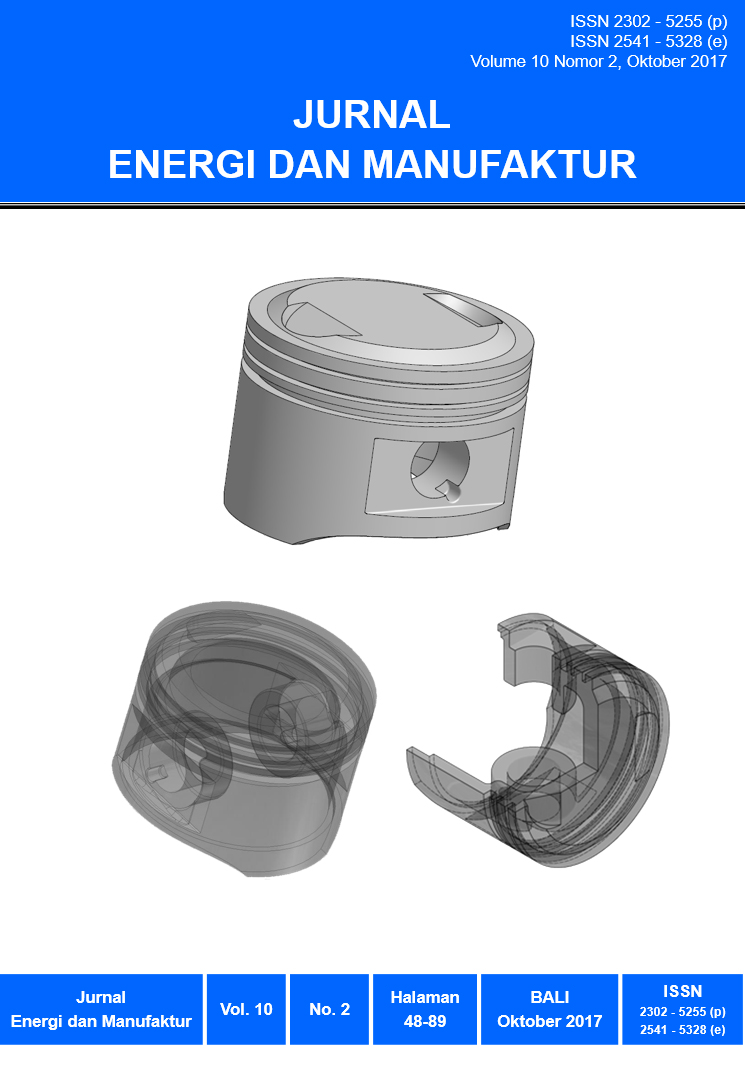Pengaruh temperatur penuangan terhadap fluiditas dan struktur mikro logam Kuningan pada metode evaporative casting
Abstract
Abstrak
Banyak penggunaan logam kuningan di industri pengerajin sebagai bahan pembuatan perhiasan dan interior ruangan yang berbentuk besar dan rumit, maka seringnya terjadi cacat coran ( fluiditas ) pada hasil pengecoran sehingga tidak sesuai dengan bentuk yang diinginkan, maka dicari alternatif metode pengecoran lain. Salah satu alternatif adalah pengecoran evaporative (lost foam). Evaporative casting adalah metode pengecoran yang menggunakan pola cetakan dari polystyrene foam yang memiliki ketelitian karena pola cetak yang mudah dibentuk sesuai benda yang diinginkan. Pengujian fluiditas digunakan cetakan bentuk spiral dengan variasi temperatur penuangan 900,950 dan 1000°C. Pengujian struktur mikro untuk mengetahui sifat mekanik material kuningan 60% Cu-40% Zn . Temperatur penuangan sangat berpengaruh terhadap fluiditas, dimana semakin tinggi suhu penungan maka semakin panjang laju alir fluiditasnya. Skema struktur mikro logam kuningan (60% Cu- 40% Zn) terlihat fase a ( terlihat terang ) dan fase ß ( terlihat gelap ) lebih mendomonasi. Jenis kuningan ini sering disebut dengan nama alpha plus beta brass yang memiliki sifat keras dan getas. Kata Kunci : Kuningan, Evaporative casting, Fluiditas, Struktur mikro
Abstract
Much use of metal brass craftsmen in the industry for the manufacture of jewellery and interior room in the shape of a large and complicated, then often occur defect castings (fluidity) in casting so that the results do not correspond to the desired shape, then look for an alternative method of casting the other. One alternative is the evaporative casting (lost foam). Evaporative casting is a casting method using polystyrene foam mold of the pattern that has a precision due to the easy print pattern is formed according to the desired object. Testing the fluidity is used spiral mold temperature variation with pouring 900.950 and 1000 ° c. Microstructure of testing to know the mechanical properties of the material brass 60% Cu-40% Zn. Pouring temperature very influential towards the fluidity, in which the higher the temperature of the penungan the long fluiditasnya flow rate. The scheme of the microstructure of metals brass (60% Cu-40% Zn) visible phase ? (visible light) and ? phase (visible dark) more mendomonasi. Types of brass is often called by the name of alpha plus beta brass that has the nature of hard and brittle. Keywords: brass casting, Evaporative, Fluidity, microstructure
Downloads









